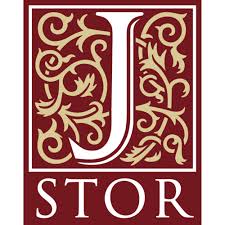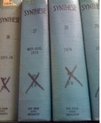SDSU JSTOR Withdrawal Project
In the summer of 2012, the librarians at SDSU began reviewing the library’s bound journals that include content duplicated in JSTOR packages to which the library subscribes (Arts & Sciences I-VII and Life Sciences). The library initiated this project because campus-wide, as well as national surveys have indicated that library users prefer using the online format over print for these types of materials. Campus surveys also indicated a need for more study space, a goal that can be readily met by removing these journals from the shelves.
Currently, bound journals duplicated in JSTOR are estimated to be residing on 2,077 linear feet of shelf space in the first floor bound journal stacks, 2,855 linear feet of shelf space in the fifth floor bound journal stacks and 284 linear feet of shelf space in the compact shelving periodicals stacks. This means that approximately 5,215 feet of shelf space is currently being taken up by print journals whose content is easily accessible electronically in one or more of the library’s multiple JSTOR packages.
As of this writing, the library is in the process of preparing these journals for withdrawal. This means that you may see bound journals on the shelf with big “Xs” on them. After much consideration, it was determined that in order to reduce the workload for library staff this process of marking the journals on the shelf prior to their withdrawal was the best way to perform this withdrawal project.
***UPDATE: On June 29th of 2013, serials cataloging finished the database maintenance work involved with removing these journals from the collection. The table below lists the total volumes to be removed along with the amount of shelf space these journals occupied.
| Number of Volumes Removed to be Removed from the First Floor Bound Journals Section: | 10,889 |
| Linear Feet of Shelf Space to be Emptied in the First Floor Bound Journals Section: | 1,900.7 |
| Number of Volumes to be Removed from Fifth Floor Bound Journals Section: | 17,245 |
| Linear Feet of Shelf Space to be Emptied in the Fifth Floor Bound Journals Section: | 2,696.8 |
| Number of Volumes to be Removed from the Compact Shelving Periodicals Section: | 1,894 |
| Linear Feet of Shelf Space to be Emptied in the Compact Shelving Periodicals Section: | 282 |
| Number of Volumes Removed from the Book Stacks: | 893 |
| Linear Feet of Shelf Space Saved in the Book Stacks | 78 |
| Microfilm Reels Removed: | 2,043 |
| Microfiche Pieces Removed: | 4,471 |
| Total Volumes to be Removed: | 30,028 |
| Total Linear of Shelf Space to be Emptied: | 4,957.5 |
Frequently Asked Questions:
- Q: What will happen to the journals once they have been taken out of the collection?
A: The SDSU Library is contributing bound journals to three separate print depository programs. First, the SDSU Library maintains membership in the WEST consortium that is responsible for keeping print copies of journals duplicated in JSTOR in case the physical volumes need to be examined by scholars in the future. Journals are also being donated to the Southern Regional Library Facility (SRLF) and Harvard Depository, which are both keeping “dark archives” of these journals in case they need to be rescanned into JSTOR. If a journal volume is already duplicated in the holdings of another WEST member library, and is also held in the SRLF and Harvard, then the journal volume may be recycled. If a certain journal volume is not held in WEST, we may send that volume to a WEST archive builder. A list of journals contributed to cooperative serials storage programs may be found at this URL: https://serials.sdsu.edu/?page_id=23 - Q: Who decided which journals to keep and which journals to discard?
A: The respective subject librarians made the decisions on which journals to keep. Some subjects rely more heavily on print journals than others. - Q: What happens if a title drops out of JSTOR?
A: Since the library started subscribing to JSTOR archives there has never been a journal that has had content removed from the JStor archives. There have been cases where titles dropped out of archives for new subscribers but current subscribers to the JSTOR archives are “grandfathered in” to perpetual acces. In the case that a title is no longer available through JSTOR the library will still be able to access the print archive through the WEST consortium. - Q: What about our current subscriptions to journals duplicated in JSTOR? Does this affect those journals?
A: No, this project only involves journals duplicated in the archive packages - Q: If a journal is included in a different archive package, will you withdraw it?
A: Not at this point. Right now the library is only considering withdrawing journals duplicated in the JSTOR Arts & Sciences I-VII Collections and the JSTOR Life Sciences Collections - Q: Is there a list of journals to be withdrawn?
A: Yes, please see this page: https://serials.sdsu.edu/weeding-projects/jstor-weeding-project/2012-jstor-titles-withdrawn/ - Q: Why can’t the library donate these older journals to another library?
A: The library does not have the staff time to coordinate that kind of effort. Gallagher and Rathemacher (2012) found that at their library, out of 10,805 volumes, only 236 were requested by fellow institutions after being advertised on an email list. This is a request
rate of 2%. Additionally, the authors also indicated that most of the journal volumes were from Science, which is a title the SDSU library is keeping in print. - Q: Are other university libraries undertaking this kind of project?
A: Yes. Please take a look at these web sites describing projects going on at other libraries: UC Irvine, Ohio State University, Texas State University, Kansas State University, Harvard University, Colorado College, University of Vermont, University of Northern Colorado, University of Windsor (Canada), Lebanon Valley College, University of Rhode Island, Washington and Lee University
If you have any questions or concerns regarding this project, please feel free to email Wil Weston, Tyler Rogers or Jennifer Hollander
Reference
Gallagher, B. T., & Rathemacher, A. J. (2012). A Serials Withdrawal Project at the University of Rhode Island University Libraries. Library Resources & Technical Services, 56(2), 94-103.

